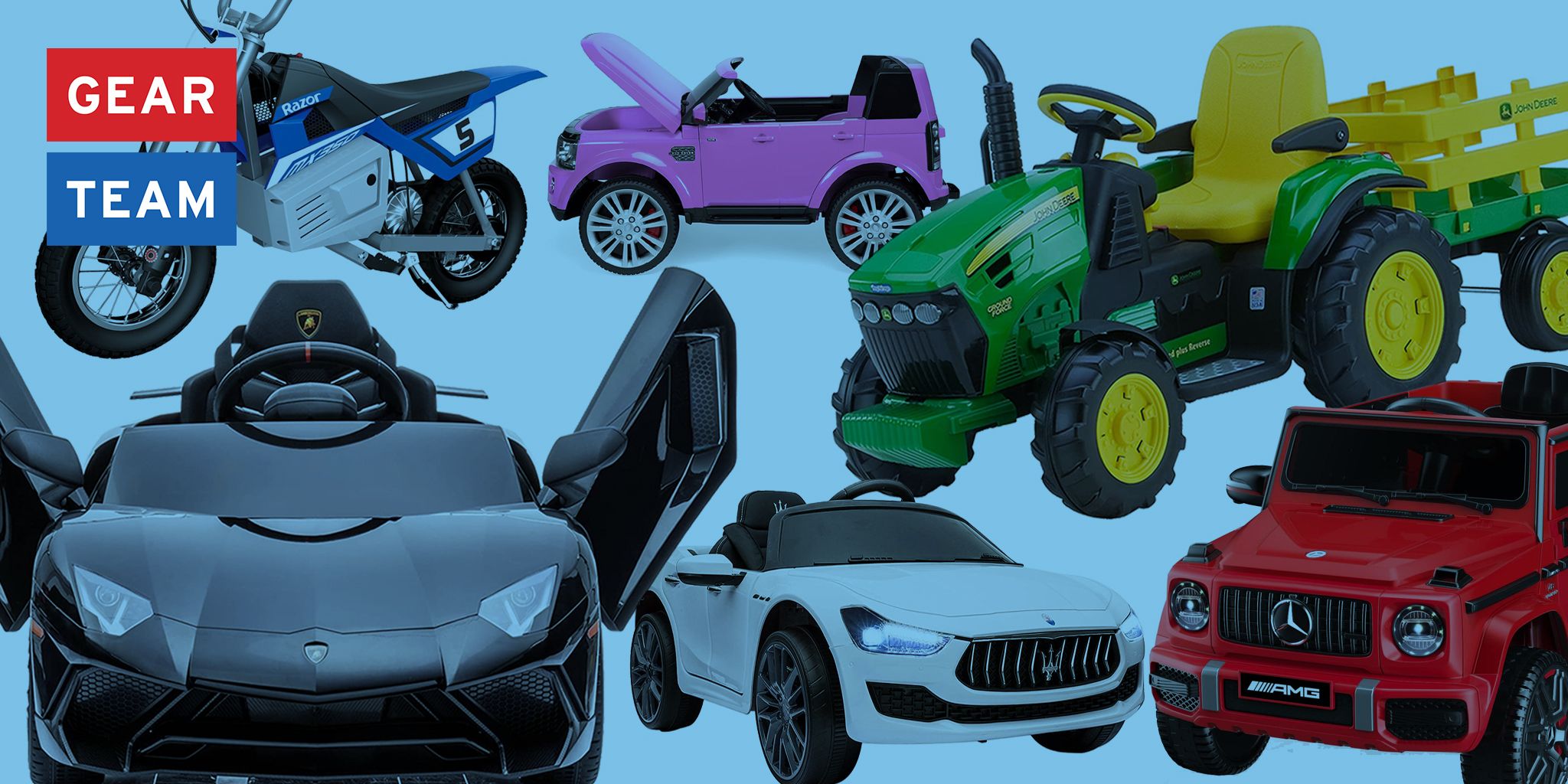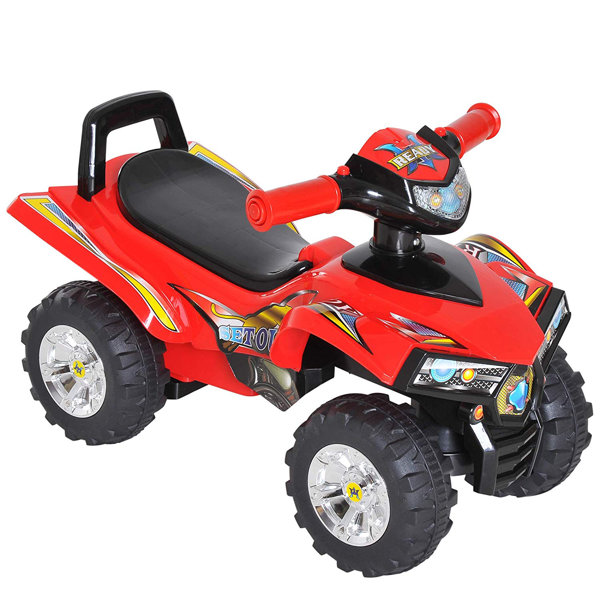Great Ideas To Selecting Ride On Toys
Great Ideas To Selecting Ride On Toys
Blog Article
What Ride-On Safety Features Should I Consider? Pros And Pros And
Safety features are important to think about when selecting the best ride-on car for your child. This will ensure that they remain safe during their playtime. Seat Belts are one of the most important safety features you need to take into consideration.
Pros - Seatbelts keep your child in the ride-on vehicle, reducing chances of them falling off or being kicked out while playing. Seat belts offer an additional layer of safety to your child, especially in the event of abrupt stops or abrupt turns.
Cons – Some ride-ons cars particularly those made for toddlers, do not have seatbelts. Additionally, some children find seat belts uncomfortable and restrictive. This could result in a resistance to using them.
Sturdy Construction
Pros - A vehicle made from high-quality materials and sturdy structure will last longer and resistant to damage. It will also provide long-term reliability and safety. It can withstand all the demands of play and provide stability.
Pros - Sturdy materials are often expensive and may not be affordable for some families. Moreover, the heavier materials may affect the maneuverability and portability of the ride on car.
Low Center of Gravity -
Pros: Ride-ons that have a reduced center of gravity will be less likely to tip, thus reducing the chance of accidents. They provide greater stability and more balance, especially during turning and maneuvers.
Cons - Some rides-on-cars with low centers of gravity could hinder their off-road capabilities or ground clearance. This limits their versatility in certain conditions.
Remote control for parents
Pros - Remotely controlled ride-on vehicles let parents supervise and support their children's play, providing an added security and control. Parents can avoid collisions, aid in an emergency, or navigate difficult terrain.
Cons: Controlling parents using a remotes may hinder the autonomy and independence of children who rely on their parents' guidance and help when playing. Remote-controlled vehicles can be more costly than ride-on cars that operate by hand.
Speed Limiters
Pros - Ride on cars with speed limiters or speeds that can be adjusted limiters permit parents to determine the maximum speed of the car. This lowers the likelihood of accidents or collisions. Parents can increase the speed of their ride-on vehicle as their child grows more confident and skilled.
Cons – Some children will outgrow lower speed settings, which can lead to frustration and discontent. Also, some models may not have speed limiters, or require additional features or accessories.
Safe Start Technology -
Pros: Safe Start Technology ensures the ride-on vehicles begin and stop without a hitch. This reduces the risk of sudden jerks that could cause instability or even startle the child. It's safer and more comfortable to ride in.
Cons - Models that include the safe start feature may cost more than models without. Furthermore, children might not find a gradual acceleration less exciting or enjoyable than fast stops and quick starts.
Visibility Enhancements
Pros- Ride-on cars with improved visibility, such as working headlights (or taillights) reflective materials, or other features increase visibility. This can be helpful in dimly lit or dim conditions. They are also more visible, which increases safety.
Cons - Visibility enhancements can drain the battery more quickly or create more complexity in the ride-on car's design, increasing the risk of malfunctions or maintenance issues.
If you weigh the pros and cons of each safety option, you can choose a ride-on vehicle that is safe and offers a fun experience for your child. See the best JCB ride on toys for blog recommendations including a toy car, childrens digger, ride on digger, ride a toy, toy a car, childrens electric ride on, race car toy, race car toy car, two seater electric cars, two seater childrens electric cars and more. . 
What Are The Best Models For Kids Cars? Designed For Indoor And Outdoor Use?
The features of the models designed for outdoor and indoor use are different. Here are a few variations in these car models indoor Use Cars
Dimension and weight The majority of indoor cars are smaller and lighter to allow them to fit into tight spaces such as bedrooms, living rooms and hallways. These cars are small and compact, which allows them to maneuver easily through narrow spaces or around corners.
Low Ground Clearance: Cars for indoor use have a lower ground clearance to ensure they don't get stuck or snagged by obstacles such as rugs carpets or thresholds. This ensures smooth and continuous movement across indoor surfaces without fear of becoming stuck or falling over.
Smooth Wheels. Cars that are used indoors typically feature wheels made of substances that have a smooth surface, like plastic or rubber. These wheels provide better grip and traction on smooth surfaces like laminate flooring, hardwood floors or tiles. They are designed with a minimum of noise to avoid scratching and scuffing on indoor surfaces.
Temporary Speed - Indoor vehicles are usually limited to a lower speed in order to maintain safety and control. This can prevent accidents or collisions which could occur due to walls, furniture or any other obstacle found inside.
Outdoor Use Cars -
Durable construction - Outdoor cars are built using durable materials, like steel or tough plastic, to withstand rough handling and elements of nature, including the sun, humidity and temperature fluctuations. They are less likely to suffer from tear and wear caused by exposure to outdoor environments.
Higher Ground Clearance: Outdoor-use vehicles are equipped with a greater level of ground clearance that allows them to traverse uneven terrain or bumps encountered when driving outdoors. This allows the car to move over rough surfaces without damage or a snag.
Traction Tires: The tires on cars that are designed for outdoor use typically have treads or patterns that improve traction and grip when driving on slippery or uneven surfaces. This gives you more control and stability while driving in outdoor terrain.
Weather Resistant - Outdoor use vehicles may include weather-resistant elements such as sealed electronics, waterproof casings or rust-resistant materials that protect against moisture and environmental damage. This permits the vehicle to stand up to water, puddles or mud and still perform well.
Higher Speeds - Cars for outdoor use usually have greater top speeds to accommodate wide spaces and the longer distances found outdoors. It offers a thrilling and thrilling experience for kids who want to explore outdoor spaces.
By considering these design features and traits, parents are able to choose a kids' car model that's tailored to their unique requirements and the environment they are in, outdoor or indoors, and ensuring the safety, enjoyment and lasting play experience for their child. See the recommended discover more for electric kids cars for website examples including toy car for car, remote control childrens car, toy the car, toy in car, electric ride along car, toy cars, remote control childrens car, toy with car, car electric ride on, ride on toy and more. . 
What Remote Control Options Are There For Childrens Cars Available? What Are The Benefits And Disadvantages?
Remote-controlled vehicles for children, also known as RC cars, are offered in a variety of designs, sizes and prices to suit different budgets and preferences. Here's an overview of the varieties, sizes, costs along with pros and cons of remote control cars for children - Types of Remote Control Children's Cars -
Electric RC Cars – These are battery-powered, remote-controlled vehicles which can be used indoors and out. They come in a range of designs including trucks, buggies or sports cars.
Nitro RC Cars – Gas-powered remote controlled vehicles that have higher performance and speeds, but more maintenance and expertise is required in order to operate. They tend to be larger and more expensive than an electric RC car.
Scale Models Remote-controlled replicas of real-life vehicle models, including cars, trucks, aircrafts, and boats. Scale models come in different scales, ranging from 1 10 to 1-24 and larger scales providing more detail and realism.
Sizes -
Remote control cars for children come in various sizes, from small micro-sized versions to larger-scale replicas. The size of the vehicle will affect its performance, speed and handling characteristics.
Micro-sized cars that are light and compact, are great for indoor use and also by children who are younger. The larger models offer greater power and durability, making them ideal for off-roading or racing.
Prices
The costs of remote controlled children's cars vary depending on factors such as the size, features, brand and the quality of construction.
Small electric vehicles can be purchased for $20-$100, and larger electric or nitro-powered RCs may be purchased for $100-$500 or more.
Scale models as well as high-end hobby-grade RC cars can cost several hundred dollars up to 1000 dollars, based on the amount of detail and performance.
Pros and Cons
Pros -
Adults and children alike can take pleasure in the thrills and excitement of remote-controlled vehicles.
Skill Development The operation of an RC vehicle helps children develop eye coordination, spatial awareness, and problem-solving skills.
Social Interaction. You can go on the RC cars with your family and friends that encourage social interaction.
Customization – Many RC cars can be modified with aftermarket parts or upgrades to enhance performance and look.
Cons
Cost - A high-quality model with advanced features can be costly, particularly hobby-grade models.
Learning Curve - Operating an RC vehicle requires practice and skill. Children who are younger may find it difficult to control the controls.
Maintenance - Cars with RC engines require regular maintenance, including cleaning, lubrication, as well as occasional repairs or replacements of parts.
Safety Issues - RC cars can pose safety risks such as collisions, falls and electrical hazards when not operated under supervision of an adult and the utmost care.
In general, remote-controlled children's cars provide an exciting as well as educational experience for kids of all ages, but it is important to take into consideration aspects like the size, price features, safety, and size when choosing the right model for your child. The hobby-grade RC models are for older kids or those who are avid. Less complicated models are better for children who are just beginning their journey. See the recommended remote control childrens cars kidscars.co.uk advice for more recommendations including electric toy car, electric ride along car, electric rideons, remote control childrens car, ride ons, lambo toy car, race car toy car, kids electric cars, electric ride on cars, childrens ride on and more. .